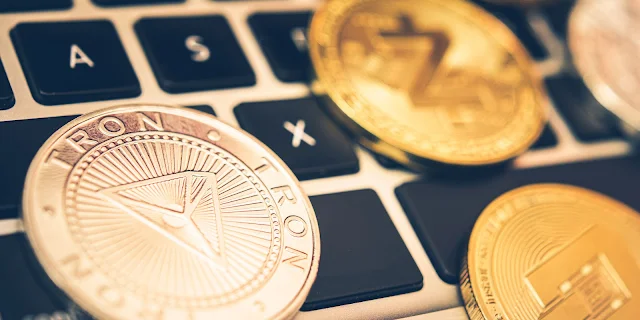Mining vs. Wallets: The Two Pillars of Cryptocurrency Ownership
Cryptocurrency, a digital marvel reshaping finance, relies on two fundamental pillars for its existence and functionality—Mining and Wallets. As we navigate the intricate landscape of digital currencies, it's crucial to understand the symbiotic relationship between these two components.
I. Introduction
A. Definition of Cryptocurrency Ownership
In the realm of digital assets, ownership takes a unique form. It's not about holding a physical object but rather cryptographic keys that unlock the digital vault.
B. Significance of Mining and Wallets
Mining and Wallets stand as the guardians of this cryptic realm. Mining breathes life into new coins, while Wallets serve as secure vaults for existing ones.
II. Mining: Unveiling the Crypto Depths
A. What is Mining?
Mining, in the cryptocurrency context, is the process of validating transactions and adding them to the blockchain. Miners, equipped with powerful computers, compete to solve complex mathematical problems.
B. The Role of Miners
Miners play a pivotal role in maintaining the integrity of the blockchain. They validate transactions, prevent double-spending, and ensure the decentralization of the network.
C. Cryptocurrency Creation through Mining
The reward for successfully mining a block is the creation of new cryptocurrency coins, a process integral to the expansion of the digital currency ecosystem.
III. Types of Mining
A. Proof of Work (PoW)
PoW, the original mining method, requires miners to solve intricate mathematical problems, proving their computational effort.
B. Proof of Stake (PoS)
PoS, an energy-efficient alternative, selects validators based on the amount of cryptocurrency they hold and are willing to "stake" as collateral.
C. Other Mining Methods
Innovations in the space have introduced various other methods, each with its unique attributes.
IV. Wallets: Safeguarding Your Digital Fortune
A. Introduction to Cryptocurrency Wallets
A wallet, in the cryptocurrency realm, stores private and public keys, allowing users to send and receive digital currency securely.
B. Types of Wallets
1. Hardware Wallets
Physical devices that store keys offline, minimizing exposure to online threats.
2. Software Wallets
Applications or online platforms for convenient access to cryptocurrencies.
3. Paper Wallets
A physical document containing a user's keys, offering an offline storage option.
V. Security Concerns and Solutions
A. Mining Risks
Mining operations are not without risks, including hardware failures, energy consumption, and the potential for centralization.
B. Wallet Vulnerabilities
Wallets face threats such as hacking, phishing, and human error. Implementing robust security measures is paramount.
C. Ensuring a Secure Crypto Experience
The onus is on users to adopt best practices, including regular security updates, utilizing hardware wallets, and staying vigilant against phishing attempts.
VI. Deciding Factors for Users
A. User Preferences
Users must align their preferences, whether inclined towards active participation through mining or opting for a more passive role with wallets.
B. Cost and Energy Considerations
Mining involves substantial energy consumption, a factor users must weigh against potential profits. Wallets, on the other hand, incur minimal ongoing costs.
C. Long-Term vs. Short-Term Gains
Mining may yield immediate returns, but wallets provide a steady, long-term storage solution. Users must decide based on their investment goals.
VII. The Evolution of Cryptocurrency Ownership
A. Historical Perspective
From the early days of Bitcoin to the present, the landscape of cryptocurrency ownership has evolved, with mining and wallets adapting to technological advancements.
B. Current Trends and Innovations
Smart contracts, decentralized finance (DeFi), and non-fungible tokens (NFTs) mark the current landscape, influencing the dynamics of cryptocurrency ownership.
VIII. The Symbiotic Relationship
A. How Mining and Wallets Interconnect
Mining generates new coins that find a home in wallets. This interdependence creates a cycle that sustains the cryptocurrency ecosystem.
B. Mutual Dependence for a Thriving Crypto Ecosystem
A healthy crypto ecosystem relies on miners producing new coins, while wallets secure and facilitate the circulation of existing ones.
IX. Challenges in Cryptocurrency Ownership
A. Regulatory Hurdles
Governments worldwide grapple with regulating cryptocurrencies, impacting both mining operations and wallet services.
B. Technological Advancements and Adaptation
The rapid evolution of blockchain technology poses challenges and opportunities for users, miners, and wallet providers alike.
X. Future Projections
A. Emerging Technologies
Technological advancements such as quantum computing and improved consensus algorithms shape the future of cryptocurrency ownership.
B. Shaping the Future of Cryptocurrency Ownership
Community collaboration, technological innovation, and regulatory clarity will play pivotal roles in determining the trajectory of cryptocurrency ownership.
XI. Conclusion
A. The Dynamic Duo: Mining and Wallets
In conclusion, the synergy between mining and wallets creates a dynamic and resilient foundation for cryptocurrency ownership. Understanding their roles and interconnections empowers users to navigate this ever-evolving landscape.
XII. FAQs
A. How does mining contribute to the cryptocurrency ecosystem?
Mining contributes by validating transactions, securing the network, and creating new coins, essential for the cryptocurrency ecosystem's growth.
B. Are hardware wallets safer than software wallets?
Yes, hardware wallets, being offline, offer enhanced security compared to software wallets susceptible to online threats.
C. What are the potential risks of mining?
Mining risks include hardware failures, high energy consumption, and the potential for centralization.
D. Can I mine cryptocurrencies with an average computer?
While possible, the competitive nature of mining requires specialized equipment for meaningful participation.
E. How often should I update my wallet's security features?
Regular updates are crucial to patch vulnerabilities. Aim for immediate updates upon the release of security patches.


I appreciate the in-depth analysis in your articles
ReplyDelete